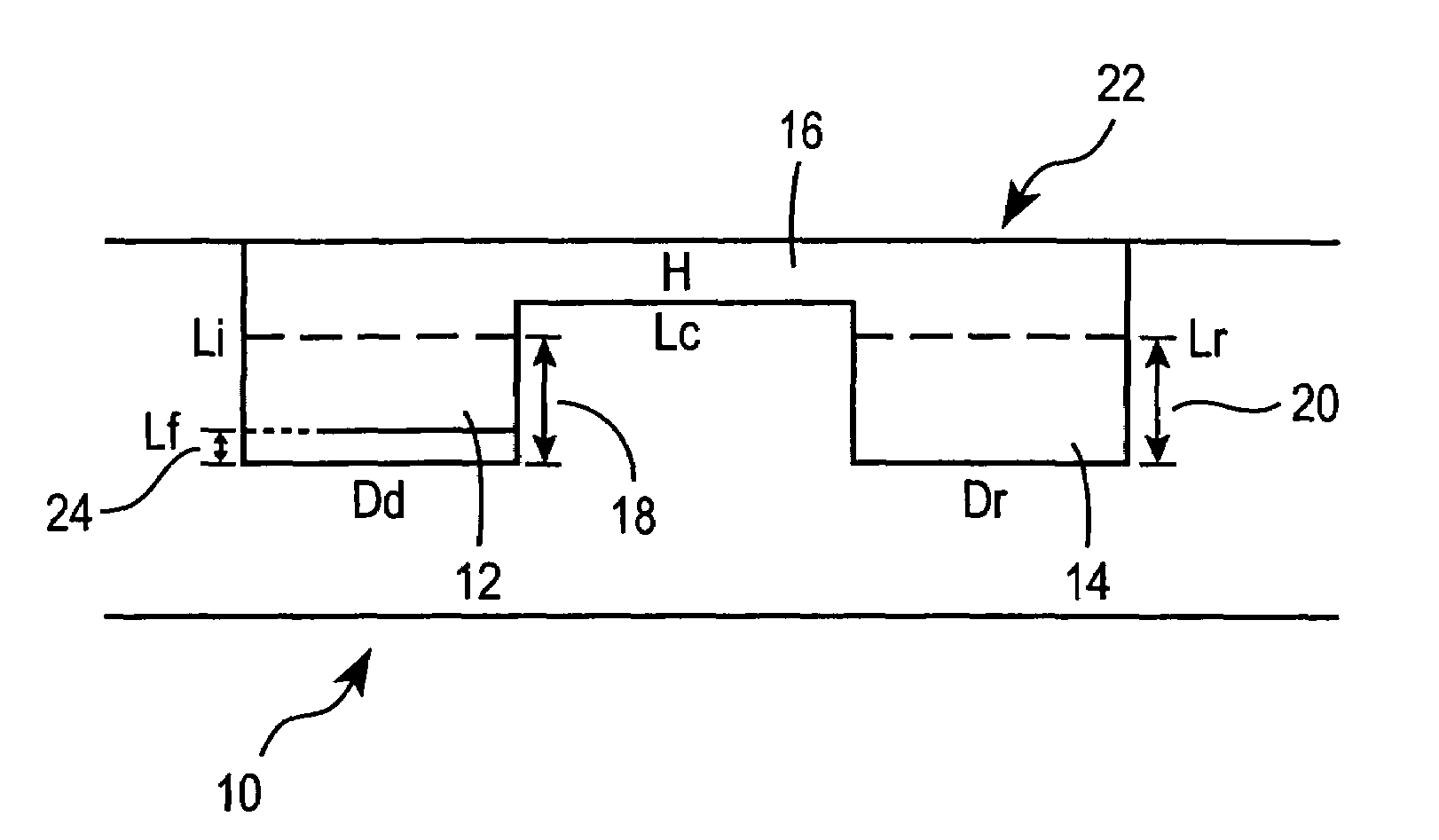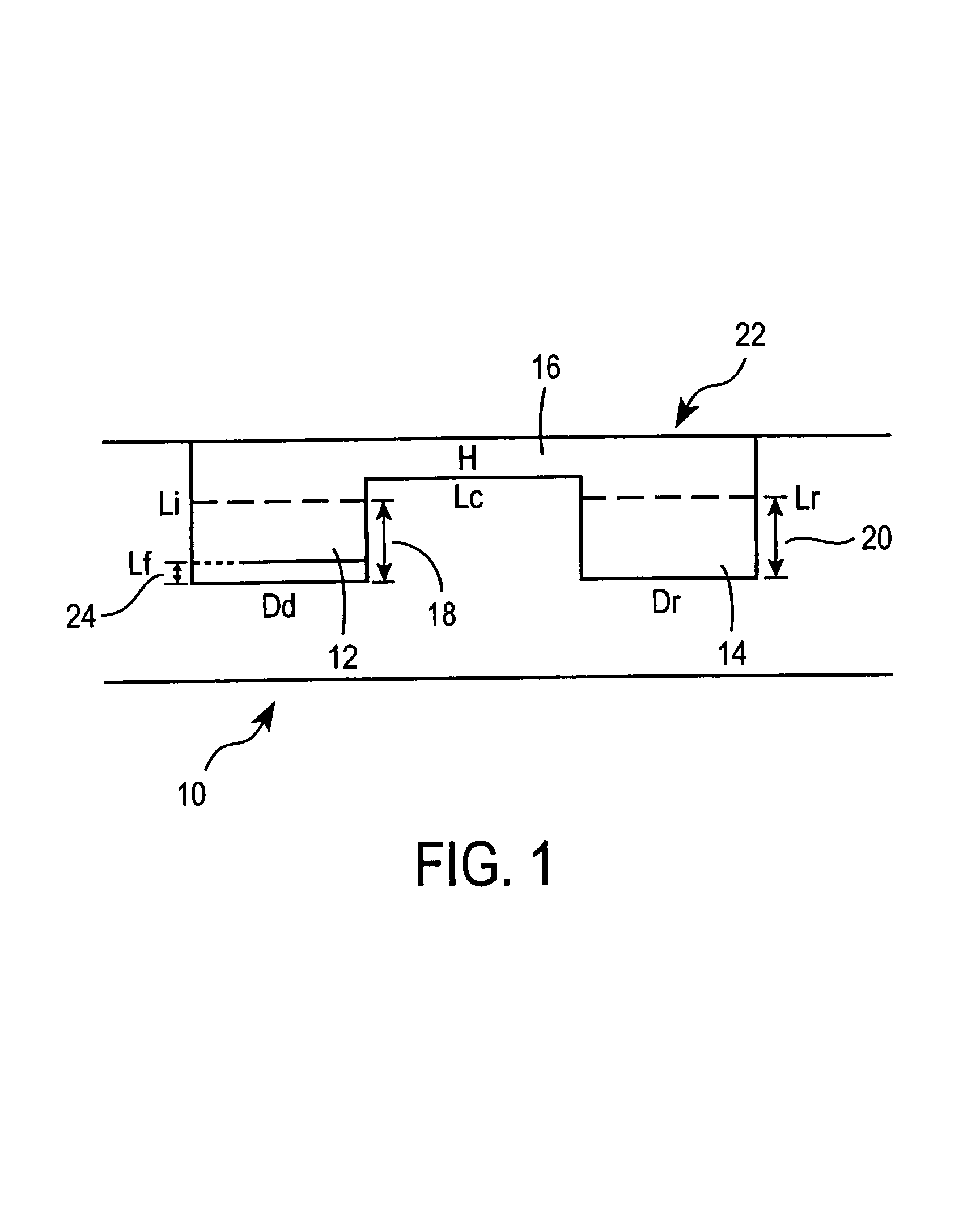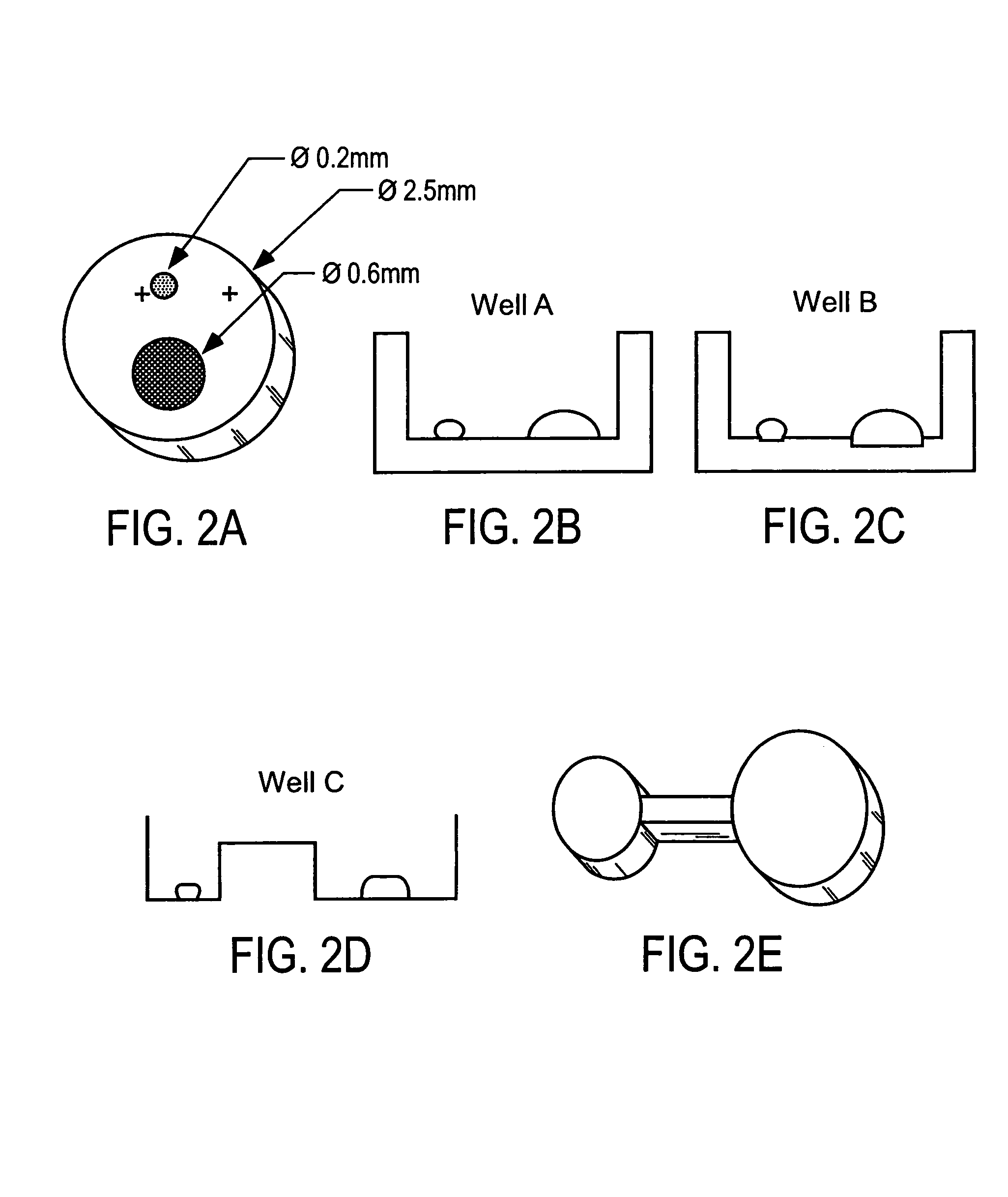Method for screening crystallization conditions in solution crystal growth
a crystal growth and crystallization condition technology, applied in the field of crystallization of proteins, can solve the problems of high cost, laborious and tedious screening procedures, and large amount of cos
- Summary
- Abstract
- Description
- Claims
- Application Information
AI Technical Summary
Benefits of technology
Problems solved by technology
Method used
Image
Examples
example 1
[0067]Nanoliter protein droplets were used for vapor diffusion, batch and liquid diffusion crystallization screening. The protein solutions of either lysozyme, thaumatin, or NAD synthetase were applied using a five microliter Hamilton syringe. To ensure complete wetting of the small droplet to the experiment chamber, the tip of the Hamilton syringe was placed in contact with the wall of each experiment chamber. A variety of microarrays were designed to accommodate protein solution droplets with volume ranges of 5–20 nanoliters and precipitate volumes of 100–200 nanoliters. The array prototyping was accomplished using MicroScope slides with permanent sealing of neoprene gaskets of varying thickness (0.1 mm 0.5 mm). Once all solutions were applied to an individual experiment chamber within the microscope slide, the experiment was sealed (with oil or grease) by placing a glass cover slide over the top of the gasket. FIG. 3 is a photograph of a typical design for a 60 chamber array prot...
PUM
| Property | Measurement | Unit |
|---|---|---|
| volume | aaaaa | aaaaa |
| volume | aaaaa | aaaaa |
| concentrations | aaaaa | aaaaa |
Abstract
Description
Claims
Application Information
 Login to View More
Login to View More - R&D
- Intellectual Property
- Life Sciences
- Materials
- Tech Scout
- Unparalleled Data Quality
- Higher Quality Content
- 60% Fewer Hallucinations
Browse by: Latest US Patents, China's latest patents, Technical Efficacy Thesaurus, Application Domain, Technology Topic, Popular Technical Reports.
© 2025 PatSnap. All rights reserved.Legal|Privacy policy|Modern Slavery Act Transparency Statement|Sitemap|About US| Contact US: help@patsnap.com



